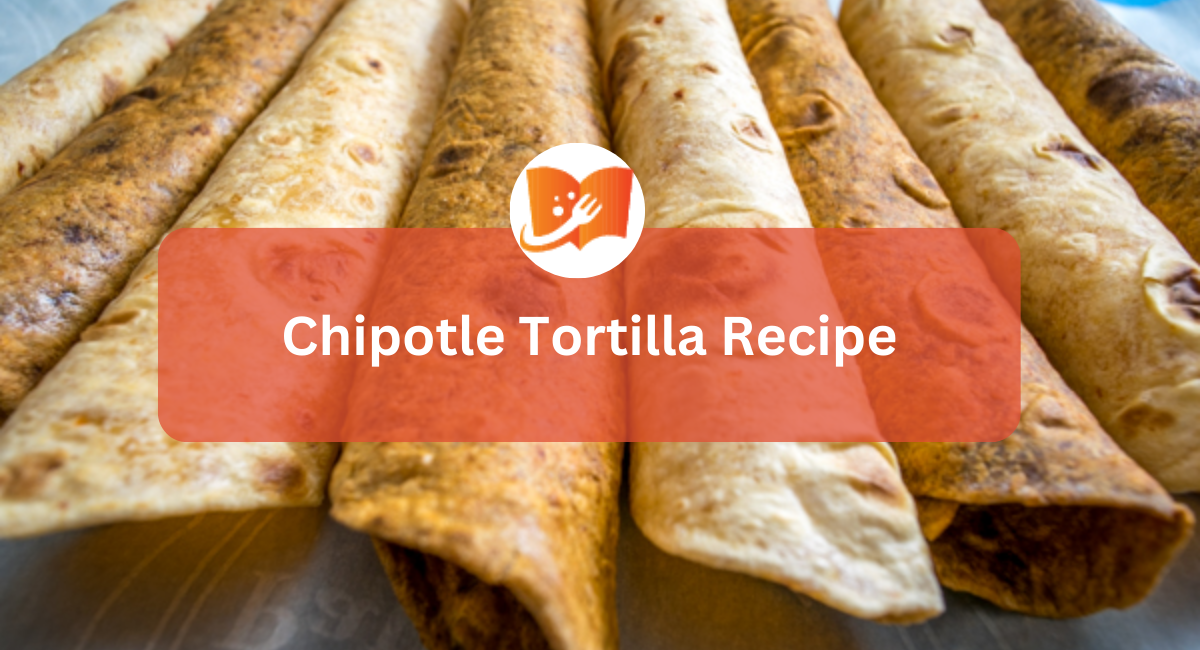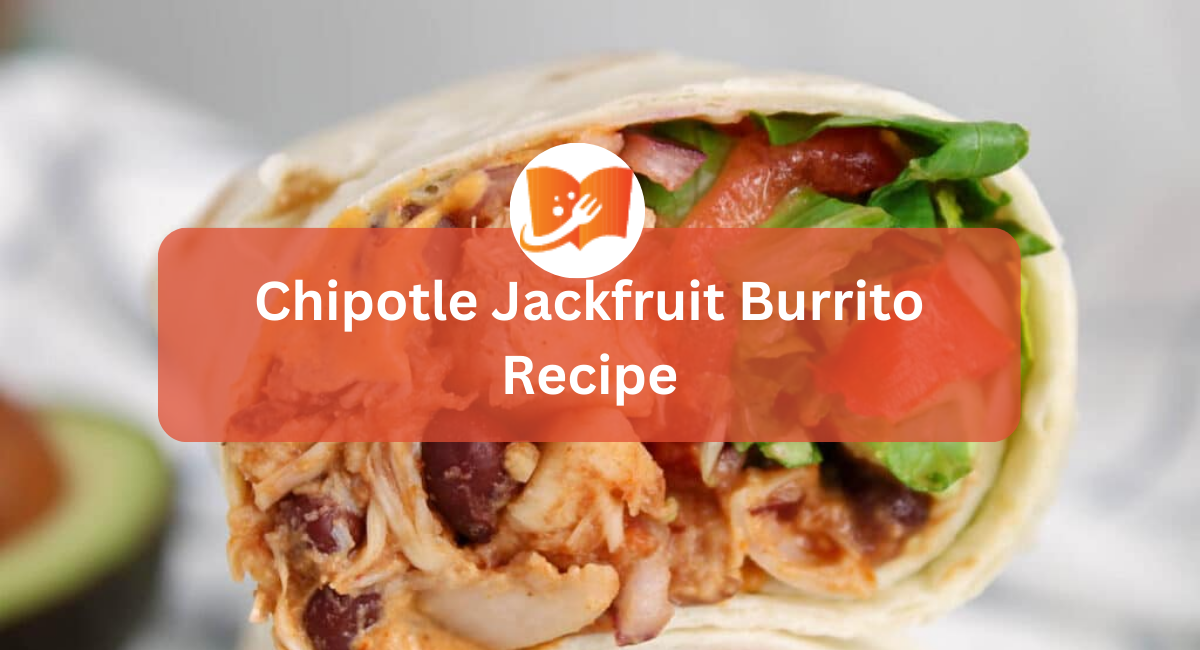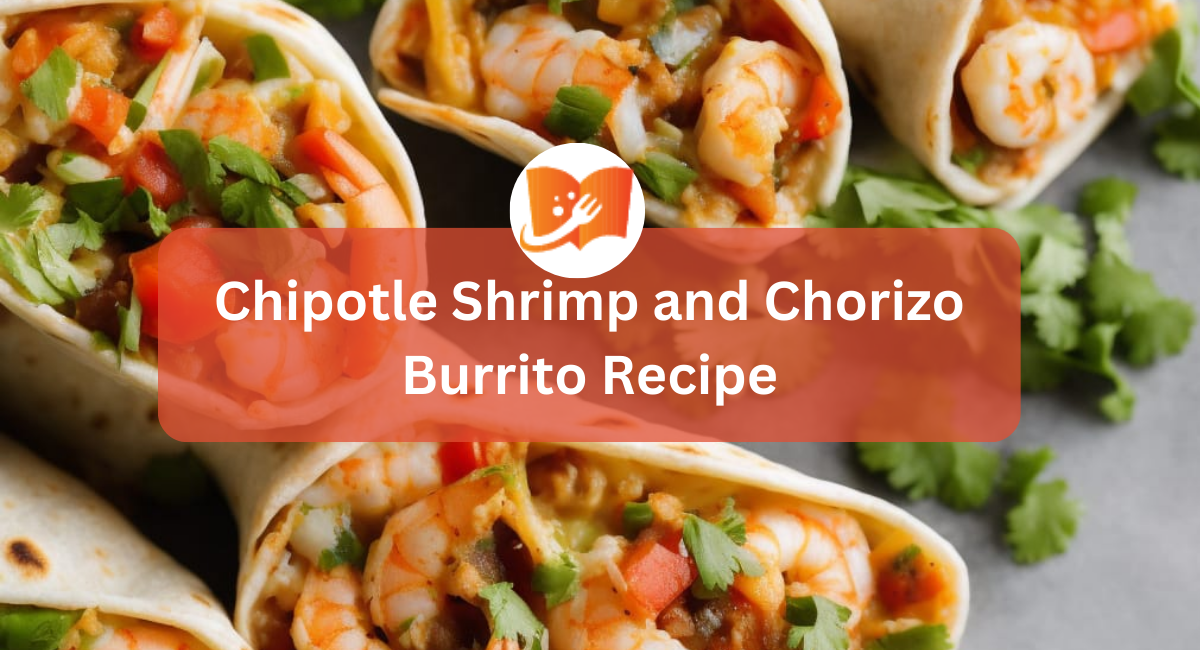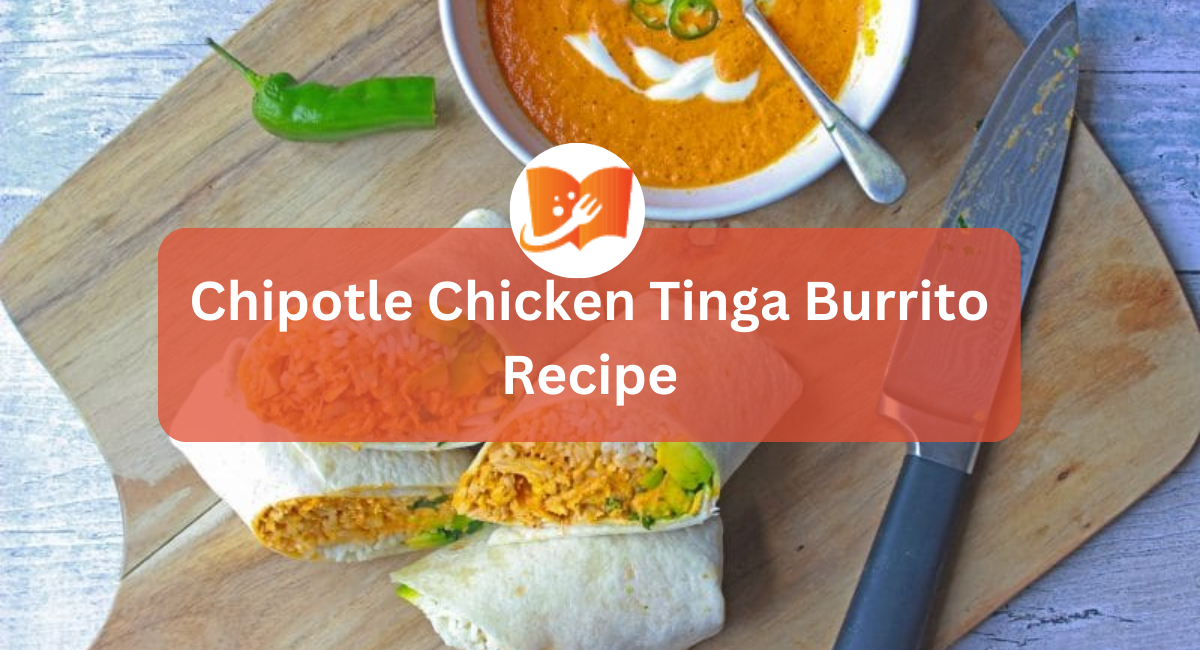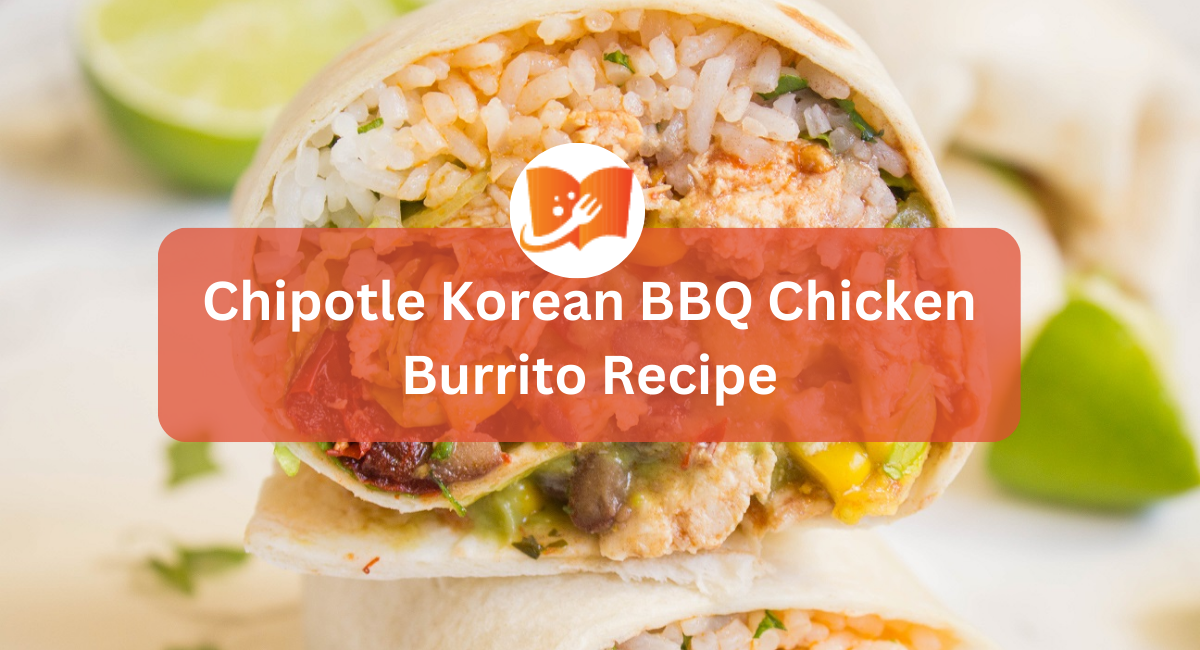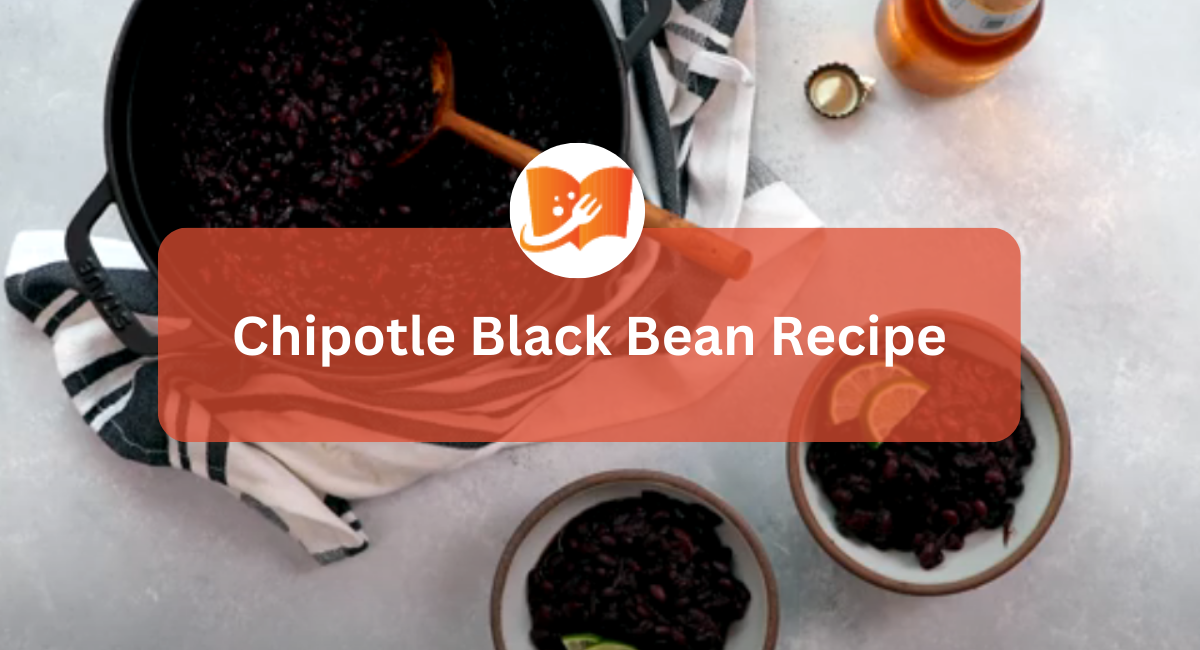Chipotle hummus is a spicy, smoky twist on the classic Mediterranean dip. It combines the creamy, nutty flavors of traditional hummus with the fiery kick of chipotle peppers in adobo sauce. This vibrant and flavorful dip is incredibly versatile, perfect for spreading on sandwiches, scooping with vegetables or chips, or adding a zesty element to your favorite dishes. Whether you’re a hummus aficionado or new to this culinary delight, chipotle hummus is sure to tantalize your taste buds and leave you wanting more.
Ingredients for Chipotle Hummus Recipe

- 1 (15-oz.) can chickpeas (NOT drained): Chickpeas are the base of hummus, providing a creamy texture and earthy flavor. The liquid from the can, also known as aquafaba, helps create a smoother consistency.
- 2-4 cloves garlic (depending on how garlicky you prefer it): Garlic adds a pungent and savory flavor to the hummus. The amount can be adjusted to personal preference.
- 1/2 cup tahini (sesame seed paste): Tahini is a paste made from ground sesame seeds and is essential for the rich, nutty flavor and smooth texture of hummus.
- 2-4 whole chipotle peppers in adobo sauce: Chipotle peppers are smoked and dried jalape\u00f1o peppers packed in adobo sauce, a flavorful blend of tomatoes, vinegar, garlic, and spices. They add a smoky, spicy kick and a vibrant red-orange color to the hummus. The number of peppers can be adjusted to control the heat level.
- 2-3 Tbsp fresh lemon juice: Lemon juice provides acidity and brightness, balancing the richness of the tahini and the smokiness of the chipotle peppers.
- 3/4-1 tsp sea salt (depending on how salty you prefer it): Salt enhances the flavors of all the ingredients.
- 1-2 Tbsp extra virgin olive oil: Olive oil adds richness and creaminess to the hummus.
Possible Substitutions

- Chickpeas: Can be substituted with other beans like cannellini beans or butter beans, but the flavor and texture will be slightly different.
- Tahini: Can be substituted with other nut or seed butters like sunflower seed butter or almond butter, but the flavor will be altered.
- Chipotle peppers in adobo sauce: Can be substituted with chipotle powder or chipotle hot sauce, but the flavor may not be as complex.
- Lemon juice: Can be substituted with lime juice or another acidic ingredient like vinegar, but the flavor will be slightly different.
- Garlic: Can be omitted or substituted with garlic powder if you prefer a milder flavor.
- Olive oil: Can be substituted with another neutral oil like avocado oil or grapeseed oil.
Required Equipment for Making Chipotle Hummus
With these simple tools, you’ll be well-equipped to whip up a delicious batch of chipotle hummus in no time!
- Small saucepan: To simmer the chickpeas and garlic.
- Food processor or blender: To blend all the ingredients into a smooth and creamy hummus. A food processor is generally preferred for hummus, as it creates a smoother consistency than a blender.
- Measuring cups and spoons: To accurately measure the ingredients.
- Cutting board and knife: To chop the garlic cloves and mince the chipotle peppers (if desired).
- Spatula or rubber scraper: To scrape down the sides of the food processor or blender and ensure all ingredients are incorporated.
- Serving bowl: To present the finished chipotle hummus.
- Airtight container: To store any leftover hummus in the refrigerator.
- Immersion blender (Optional): If you don’t have a food processor or blender, you can use an immersion blender to blend the hummus directly in the saucepan.
- Citrus juicer (Optional): To extract fresh lemon juice. However, you can also use a fork to squeeze the lemon juice.
Chipotle Hummus Copycat Recipe – Step by Step Guide
1. Simmer the chickpeas and garlic
In a small saucepan, combine the entire contents of the can of chickpeas, including the liquid (aquafaba), and the whole garlic cloves. Turn the heat to high and bring the mixture to a rolling boil.
Once boiling, reduce the heat to low and let it simmer gently for 4-5 minutes. This step serves two purposes: it softens the chickpeas, making them easier to blend into a smooth hummus, and it mellows the harshness of the raw garlic, resulting in a more well-rounded flavor.
2. Reserve the chickpea liquid
After simmering, carefully pour about half of the liquid from the saucepan into a separate container. This liquid, also known as aquafaba, is valuable for achieving the desired consistency of your hummus. It can be added back in later if the hummus is too thick.

3. Blend the chickpeas and garlic
Transfer the remaining chickpea liquid, along with the softened chickpeas and garlic cloves, to a food processor or blender. The chickpea liquid will help the mixture blend more easily and create a smoother texture.
4. Add the remaining ingredients
Now, add the tahini, chipotle peppers (start with 2 if you prefer a milder flavor), lemon juice, and salt to the food processor or blender. The tahini will provide richness and creaminess, the chipotle peppers will infuse the hummus with smoky and spicy notes, the lemon juice will add brightness and acidity, and the salt will enhance the overall flavor.
5. Blend until smooth
Secure the lid of your food processor or blender and process the mixture until it becomes completely smooth and creamy. You may need to stop the appliance occasionally to scrape down the sides with a spatula to ensure all ingredients are incorporated evenly.
6. Adjust consistency
If the hummus seems too thick, gradually add the reserved chickpea liquid, a tablespoon at a time, until you achieve your desired consistency. Some people prefer a thicker hummus for dipping vegetables, while others prefer a thinner hummus for spreading on sandwiches or wraps.

7. Stream in olive oil
With the food processor or blender running, slowly drizzle in the extra virgin olive oil. This will further enhance the creaminess and richness of the hummus.
8. Taste and adjust seasonings
Now comes the fun part – tasting! Take a small spoonful of the hummus and assess the flavors. If you want it spicier, add another chipotle pepper or two. If it needs more brightness, add a bit more lemon juice. If it’s not salty enough, add a pinch more salt. Remember, you can always add more, but you can’t take it away, so adjust gradually.
9. Garnish and serve
After transferring the smooth and creamy hummus to a serving bowl, drizzle a small amount of extra virgin olive oil over the top. The olive oil creates a glossy sheen and adds a subtle richness to the hummus. Then, sprinkle a pinch of smoked paprika over the olive oil.
Smoked paprika offers a deep, smoky flavor that complements the chipotle peppers in the hummus, enhancing the overall taste experience. This simple garnish not only makes the dish look more appetizing but also adds a final burst of flavor and aroma, making it even more enjoyable to eat.

Chipotle Hummus Recipe Variations
Here are just a few ideas to inspire your culinary creativity. Feel free to experiment with different ingredients and flavor combinations to create your own unique chipotle hummus variations.
- Roasted Red Pepper Chipotle Hummus: Add 1/2 cup of roasted red peppers to the food processor along with the other ingredients. This variation adds a sweet and smoky flavor that complements the chipotle peppers.
- Black Bean Chipotle Hummus: Substitute half of the chickpeas with one can of black beans (drained and rinsed). This variation adds a rich, earthy flavor and a beautiful dark color to the hummus.
- Spicy Chipotle Hummus with Avocado: Add 1/2 of a ripe avocado to the food processor for extra creaminess and a boost of healthy fats.
- Chipotle Hummus with Roasted Garlic: Roast a head of garlic and add the softened cloves to the food processor for a mellow, sweet garlic flavor.
- Chipotle Hummus with Lime and Cilantro: Add the zest of one lime and a handful of fresh cilantro to the food processor for a bright and refreshing twist.
- Chipotle Hummus with Roasted Sweet Potato: Roast a small sweet potato and add it to the food processor for a touch of sweetness and a vibrant orange hue.
- Chipotle Hummus with Spicy Mango: Add 1/2 cup of diced mango and a pinch of cayenne pepper to the food processor for a sweet and spicy flavor combination.
Tips for Making the Creamiest Chipotle Hummus

Use dried chickpeas: While canned chickpeas are convenient, using dried chickpeas that you cook yourself can result in a creamier hummus. Dried chickpeas have not been sitting in liquid for an extended period, so they retain more of their natural starch, which contributes to a smoother texture. Soak the dried chickpeas overnight and cook them until very tender before using them in the recipe.
Peel the chickpeas: This step might seem tedious, but it makes a significant difference in the final texture of the hummus. The skins of chickpeas can be tough and fibrous, leading to a slightly gritty hummus. To peel them, simply pinch each chickpea between your fingers, and the skin should easily slip off.
Simmer the chickpeas with baking soda: Adding a pinch of baking soda to the water when simmering the chickpeas helps to break down their outer layer, resulting in an even creamier texture.
Use high-quality tahini: Tahini is a key ingredient in hummus, and its quality can greatly impact the final result. Look for tahini that is made from 100% sesame seeds, with no added oil or sugar. The consistency should be runny and pourable, not thick and pasty.
Blend for a long time: Don’t rush the blending process. Allow the food processor or blender to run for several minutes, or until the hummus is completely smooth and creamy. You may need to stop and scrape down the sides a few times to ensure all the ingredients are incorporated evenly.
Adjust the liquid: The amount of liquid needed can vary depending on the chickpeas and tahini used. Start with the lesser amount of chickpea liquid or water and gradually add more until you reach your desired consistency. The hummus should be thick and creamy, but not too stiff.
Use ice water: Some recipes recommend using ice water instead of room temperature water when blending the hummus. The cold temperature is said to help create a smoother and creamier texture.
Let it rest: After blending, allow the hummus to rest in the refrigerator for at least 30 minutes. This allows the flavors to meld and the hummus to thicken slightly, resulting in an even creamier texture.
Don’t be afraid of olive oil: While some recipes call for a specific amount of olive oil, don’t hesitate to add a bit more if you prefer a richer and creamier hummus.
Experiment with different techniques: Some people swear by adding a bit of baking powder to the hummus for extra fluffiness, while others recommend using a high-powered blender like a Vitamix for the smoothest results. Feel free to experiment with different techniques to find what works best for you.
Troubleshooting Common Chipotle Hummus Problems
Issue 1 – Hummus is too thick: If your chipotle hummus turns out too thick, gradually add more of the reserved chickpea liquid (aquafaba) or water, a tablespoon at a time, while blending until you reach your desired consistency. You can also add a bit more olive oil for extra creaminess.
Issue 2 – Hummus is too thin: If your hummus is too thin, add a spoonful of tahini at a time while blending until it thickens up. You can also try adding a bit more cooked chickpeas.
Issue 3 – Hummus is bland: If your hummus lacks flavor, add more salt, lemon juice, or chipotle peppers to taste. You can also try adding a pinch of cumin or smoked paprika for additional depth of flavor.
Issue 4 – Hummus is too spicy: If the hummus is too spicy for your liking, add more tahini and chickpeas to balance out the heat. You can also try adding a dollop of plain yogurt or sour cream to mellow the spiciness.
Issue 5 – Hummus is grainy: If your hummus has a grainy texture, it could be due to not peeling the chickpeas or not blending the mixture long enough. Make sure to peel the chickpeas before blending and process the mixture until completely smooth and creamy.
Issue 6 – Hummus is bitter: If your hummus tastes bitter, it could be due to using old or rancid tahini. Make sure to use fresh, high-quality tahini for the best flavor.
Issue 7 – Hummus turned brown: Hummus can sometimes turn brown due to oxidation. To prevent this, add a bit of lemon juice to the hummus before storing it. The acidity in the lemon juice helps to slow down the oxidation process.
Serving Suggestions for Chipotle Hummus

These are just a few ideas to get you started. With its versatility and bold flavors, chipotle hummus can be enjoyed in countless ways. Get creative and experiment with different combinations to find your favorite ways to enjoy this delicious and healthy dip.
Traditional Ways to Serve Hummus
- With pita bread: Pita bread, either warm or toasted, is a classic accompaniment to hummus. Its soft, pillowy texture is perfect for scooping up the creamy dip.
- With vegetables: Chipotle hummus pairs well with a variety of fresh vegetables, such as carrots, celery, cucumbers, bell peppers, broccoli, and cauliflower florets. The hummus adds a flavorful and satisfying element to raw vegetables.
- With crackers: Whole-wheat crackers or pita chips provide a crunchy contrast to the smooth hummus.
- With naan: Naan, a soft and fluffy Indian flatbread, is a delicious alternative to pita bread. Its slightly charred flavor complements the smoky chipotle hummus.
Creative Serving Ideas

- In wraps and sandwiches: Spread chipotle hummus on tortillas or flatbreads and add your favorite fillings for a flavorful and satisfying meal.
- As a salad dressing: Thin the hummus with a little water or lemon juice and drizzle it over salads for a creamy, zesty dressing.
- In grain bowls: Top cooked grains like quinoa or rice with chipotle hummus, roasted vegetables, and protein for a hearty and nutritious meal.
- As a dip for falafel: Chipotle hummus is a delicious and flavorful dip for falafel, adding a smoky and spicy kick to the dish.
- As a topping for baked potatoes: Dollop chipotle hummus on baked potatoes along with other toppings like cheese, chives, and sour cream.
- As a spread for burgers or sandwiches: Use chipotle hummus instead of mayonnaise or mustard for a unique and flavorful twist.
Pairing Suggestions
- Spicy foods: The smoky and spicy flavors of chipotle hummus pair well with other spicy foods, such as tacos, burritos, or chili.
- Grilled meats: The hummus can be served as a side dish or condiment for grilled chicken, fish, or steak.
- Mediterranean cuisine: Chipotle hummus complements the flavors of Mediterranean dishes like falafel, baba ghanoush, and tabbouleh.
- Mexican cuisine: The chipotle pepper adds a Mexican-inspired twist to the hummus, making it a great addition to tacos, quesadillas, or nachos.
Nutritional Benefits of Chipotle Hummus
Chipotle hummus is not only a delicious and versatile dip but also a powerhouse of nutrients, offering a wide range of health benefits.
Protein: Hummus is a good source of plant-based protein, essential for building and repairing tissues, supporting immune function, and maintaining healthy blood sugar levels. The protein content in hummus comes primarily from chickpeas, making it an excellent option for vegetarians and vegans.
Fiber: Both chickpeas and tahini are rich in dietary fiber, which is crucial for digestive health, promoting regular bowel movements, and preventing constipation. Fiber also helps you feel full and satisfied, aiding in weight management.
Healthy Fats: Tahini and olive oil contribute healthy unsaturated fats to chipotle hummus. These fats are beneficial for heart health, as they can help lower bad cholesterol levels and reduce the risk of heart disease.
Vitamins and Minerals: Chipotle hummus contains various vitamins and minerals, including iron, folate, magnesium, and manganese. Iron is essential for carrying oxygen throughout the body, folate is important for cell growth and development, magnesium plays a role in muscle and nerve function, and manganese is involved in bone health and metabolism.
Antioxidants: Chipotle peppers are a good source of antioxidants, which help protect the body from damage caused by free radicals. These antioxidants may help reduce inflammation and lower the risk of chronic diseases like cancer and heart disease.
Low Glycemic Index: Hummus has a low glycemic index, meaning it doesn’t cause a rapid spike in blood sugar levels. This makes it a suitable option for people with diabetes or those looking to manage their blood sugar levels.
Vegan and Gluten-Free: Chipotle hummus is naturally vegan and gluten-free, making it a suitable option for people with dietary restrictions or preferences.
Freezing Hummus for Later Use
Freezing chipotle hummus is a great way to preserve its freshness and enjoy it later. While the texture might change slightly upon thawing, the flavor remains intact. Here’s how to freeze chipotle hummus for later use:
- Portion the hummus: Divide the hummus into individual serving sizes or the amount you typically consume in one sitting. This will make it easier to thaw only what you need.
- Choose airtight containers: Use freezer-safe, airtight containers or jars to store the hummus. Leave some space at the top of the container to allow for expansion as the hummus freezes.
- Drizzle with olive oil: Before sealing the containers, drizzle a thin layer of olive oil over the surface of the hummus. This helps prevent it from drying out in the freezer.
- Label and freeze: Label the containers with the date and contents, then place them in the freezer. Chipotle hummus can be frozen for up to 3 months.
- Thaw overnight: When you’re ready to enjoy the hummus, transfer a container from the freezer to the refrigerator and let it thaw overnight.
- Stir and enjoy: Once thawed, give the hummus a good stir to restore its creamy texture. You may need to add a little water or olive oil if it seems too thick. Taste and adjust seasonings as needed before serving.
Conclusion
Chipotle hummus is more than just a dip; it’s a culinary adventure that marries the creamy, wholesome goodness of hummus with the smoky, fiery essence of chipotle peppers. Its versatility knows no bounds, making it a perfect spread for sandwiches, a delightful dip for vegetables and chips, or a zesty addition to your favorite dishes.
Whether you’re a hummus enthusiast or a newcomer to this culinary delight, chipotle hummus is sure to captivate your taste buds and leave you craving more. So, unleash your inner chef, gather your ingredients, and whip up a batch of this delectable and nutritious dip. Your taste buds will thank you!
Frequently Asked Questions
How to store leftover hummus?
Leftover chipotle hummus can be stored in an airtight container in the refrigerator for up to 1 week. It tastes even better refrigerated, as it has time to thicken up and develop in flavor.
Can I adjust the spice level of Chipotle hummus?
Definitely! The amount of chipotle peppers in adobo sauce determines the heat level. Start with 2 peppers and gradually add more until you reach your desired spiciness. Remember, you can always add more, but you can’t take it away!
What can I substitute for tahini in chipotle hummus?
If you don’t have tahini, you can substitute it with other nut or seed butter like sunflower seed butter or almond butter. However, this will alter the flavor of the hummus.
Can I use dried chickpeas instead of canned?
Yes, using dried chickpeas can result in an even creamier hummus. Soak the dried chickpeas overnight, cook them until tender, and use them in the recipe as you would canned chickpeas.
Can I make chipotle hummus without a food processor?
While a food processor creates the smoothest hummus, you can use a potato masher or fork to mash the ingredients together. The texture might be slightly coarser, but it will still be delicious.
Is Chipotle hummus healthy?
Chipotle hummus is packed with nutrients! It’s a good source of plant-based protein, fiber, healthy fats, vitamins, and minerals. It’s also low in glycemic index and naturally vegan and gluten-free.
What are some creative ways to serve chipotle hummus?
Chipotle hummus is incredibly versatile. Besides the traditional pita bread and veggie dippers, you can use it as a spread for sandwiches, a topping for baked potatoes, or even a salad dressing.
What are some other variations of Chipotle hummus?
You can experiment with various ingredients to create different flavors. Try adding roasted red peppers, black beans, avocado, roasted garlic, lime and cilantro, roasted sweet potato, or even spicy mango!
Also read:
Chipotle Berry Agua Fresca Recipe

Karen Bailey is a copycat recipe expert, mastering the art of recreating famous restaurant dishes in her own kitchen. With a passion for cooking and sharing, she’s become a trusted guide for those craving restaurant flavors at home. Through her blog and social media, Karen simplifies complex recipes, making gourmet meals accessible to all.

